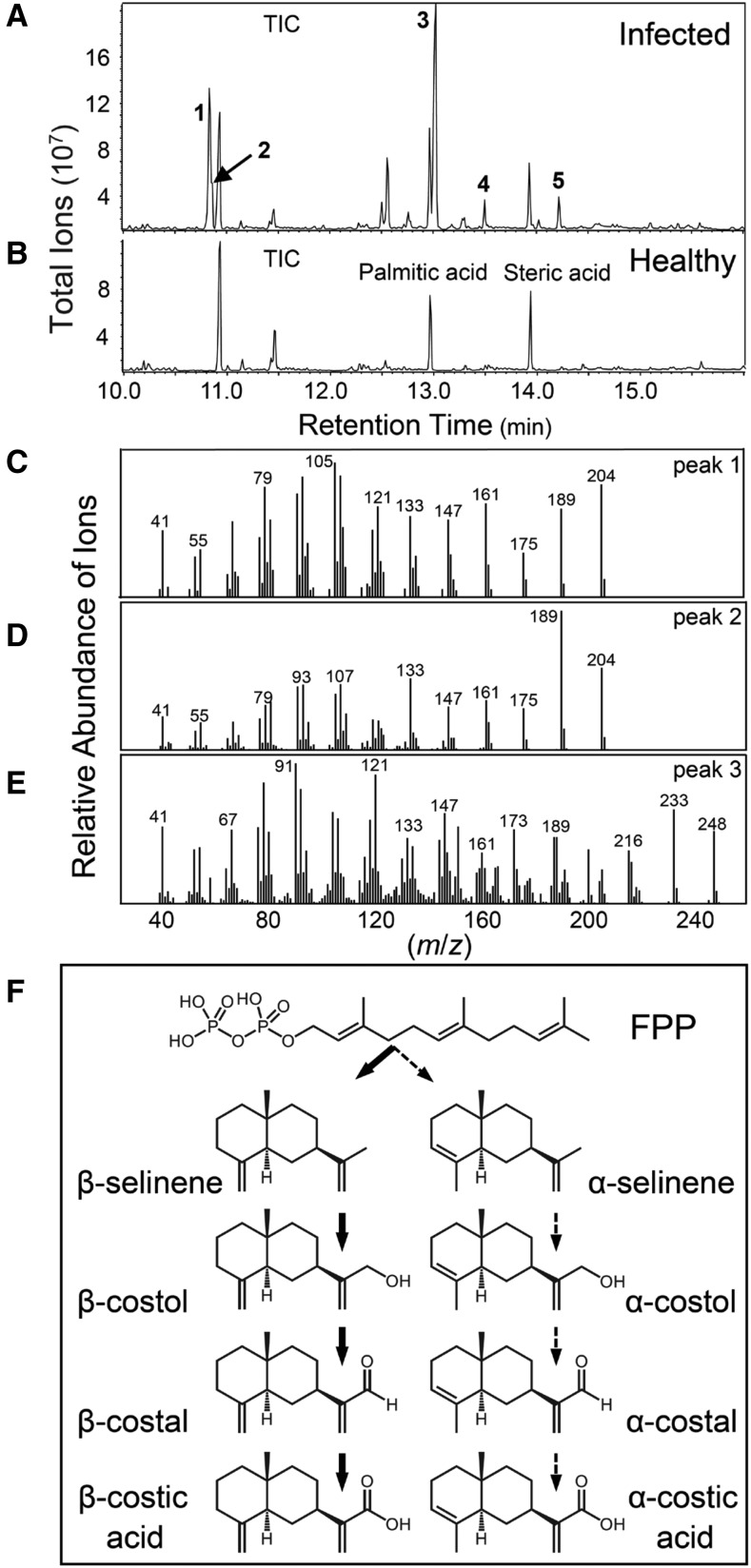Figure 1.
β-Selinene and β-costic acid can occur as major components of maize roots in field-grown plants. A and B, Visibly infected (A) and healthy (B) field-collected sweet corn (variety Golden Queen) root samples following trimethylsilyldiazomethane derivatization of carboxylic acids to corresponding methyl esters. Labeled peaks in representative gas chromatography (GC)/electron impact (EI)-mass spectrometry (MS) total ion chromatograms (TIC) are as follows: 1, β-selinene; 2, α-selinene (shoulder); 3, β-costic acid; 4, zealexin A1; and 5, zealexin B1. The presence of common fatty acids, namely palmitic acid and steric acid, is unchanged in healthy root tissues and directly labeled for reference. C to E, Corresponding EI spectra (mass-to-charge ratio [m/z]) of β-selinene (C), α-selinene (D), and β-costic acid methyl ester (E) from maize field-collected roots. F, Proposed α/β-costic acid biosynthetic pathway in maize starting from farnesyl diphosphate (FPP).

